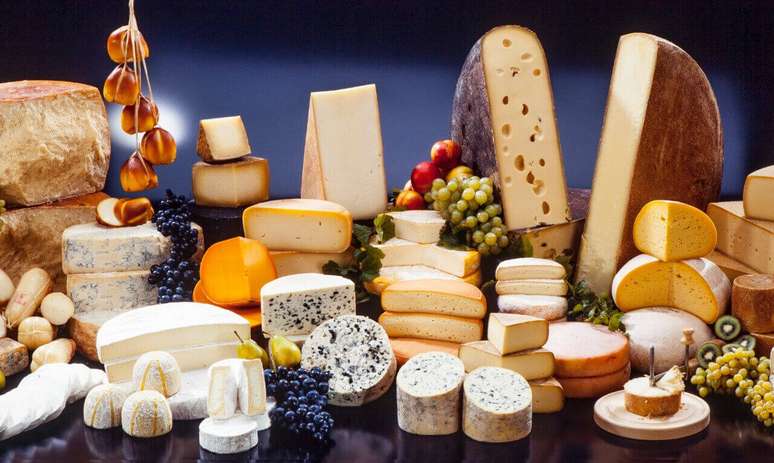No matter the type, cheese, in addition to being tasty, is a powerful food to include in your diet. Discover your advantages
According to the IBGE, Brazilians consume an average of 2.2 kilos of cheese per year. This in itself proves that the food is a favorite in the country. However, it is important not to overdo it, and limit yourself to two slices (or 30 grams) a day. This quantity is sufficient to benefit from the nutritional properties of foods, which, in fact, are very good for your health.
«The recommendation is to consume the cheese distributed throughout the diet, in snacks or grated on salad. Avoid overconsumption in a single meal, like that four-cheese pizza at the weekend. Furthermore, you need to be careful about the quantities added. in snacks and meals like pasta, for example”, recommends the nutritionist and coordinator of the Nutrition course at the Faculdade Anhanguera, Patrícia de Moraes Pontilho.
Health Benefits of Cheese
Cheese is considered a healthy processed food, as its different types are produced by coagulating milk, adding enzymes to the mixture, and subsequently removing the whey during this process. The harder it is, like parmesan, the less whey it has, as well as taking longer to press.
According to the Anhanguera teacher, the food is very rich and helps prevent diseases and ensure the proper functioning of the body. Explain each of the properties present in cheese:
Probiotics: also present in yogurt, they are live microorganisms that help rebalance the intestinal flora, preventing constipation and diarrhea;
Proteins: because they digest longer, they help increase satiety, which can contribute to weight loss;
Trace elements: They are found naturally in small quantities in the human body. They act on metabolic functions such as hormonal balance, enzyme production, cellular hydration, pH regulation, bioavailability of nutrients and, furthermore, oxygen transport.
Cheese is also rich in vitamins and minerals
Vitamins:
- A (acts on the immune system);
- B2 (promotes the metabolism of fats, sugars and proteins, as well as aiding healing and vision);
- B12 (acts on the cells that transport oxygen in the blood, preventing anemia and thrombosis);
- D (hormone that affects bone health, growth, immunity, muscles, metabolism and various organs and systems, such as the cardiovascular system and the central nervous system);
- K2 (essential substance for humans, helps the liver produce various proteins).
Minerals:
- Calcium (the most abundant mineral in the human body, it is essential for strengthening bones and teeth);
- Phosphorus (the second most abundant mineral in the body, after calcium);
- Selenium (has an antioxidant action and strengthens immunity, as well as fighting free radicals, protecting cells from aging);
- Zinc (necessary for the functioning of the immune system and which is not produced by the human body);
- Sodium (regulates blood volume and acts on nerve impulses and muscle contraction).
Pay attention to quantities
Despite the numerous benefits, excessive consumption can lead to a high sodium intake, which represents a danger for those suffering from high blood pressure. Additionally, it also increases the risk of heart disease due to the high saturated fat content, as well as digestion problems for those who are lactose intolerant.
Choose the cheese that best suits you
There are different types of cheese, one tastier than the other. Generally the yellower ones undergo a greater maturation process. Therefore they have higher levels of fat, explains the nutritionist. The expert listed the most common ones, from “thinnest” to “fattest”. Check:
Ricotta (139 kcal per 100 g): The best option for those who want to lose weight, it is light and easy to swallow. It has less fat and sodium, however having little protein is a disadvantage;
Fresh minas (243 kcal per 100 g): it can be prepared with skimmed milk, which provides less fat and greater humidity;
Buffalo mozzarella (311 kcal per 100 g): of Italian origin, it is whiter and sweeter than cow’s milk cheeses. It is rich in healthy fats, calcium and protein;
Mozzarella (320 kcal per 100 g): of Italian origin, has high levels of fat and sodium;
Gorgonzola (324 kcal per 100 g): cured by green mould, it is very common on cheese platters, in fillings and sauces;
There is no shortage of variety
Dish (346 kcal per 100 g): widely consumed in snacks and popular in Brazil, due to the cheaper price. It is less matured, with a soft texture;
Provola (350 kcal per 100 g): It appears smoked, has a compact consistency and a flavor that varies from sweet to spicy. However, it contains a lot of sodium and fat;
Cheddar (404 kcal per 100 g): what is popular in Brazil cannot be called cheese. It is a type of preparation with other types of cheese, made popular by fast food chains. May receive artificial additives, including to achieve orange color. Furthermore, original cheddar cheese has English origins and is very different from the processed version, being softer and can have notes of dried fruit, apple and roasted coffee.
Parmesan (448 kcal per 100 g): Being a hard cheese, it contains more sodium and fat. Good option for intolerant people, as it has lower levels of lactose.
Source: Terra
Ben Stock is a lifestyle journalist and author at Gossipify. He writes about topics such as health, wellness, travel, food and home decor. He provides practical advice and inspiration to improve well-being, keeps readers up to date with latest lifestyle news and trends, known for his engaging writing style, in-depth analysis and unique perspectives.







![Tomorrow Belongs to Us: What’s in store for Friday 17 October 2025 Episode 2055 [SPOILERS] Tomorrow Belongs to Us: What’s in store for Friday 17 October 2025 Episode 2055 [SPOILERS]](https://fr.web.img5.acsta.net/img/96/95/96957c8eef9a3bd87daf877432629ae3.jpg)

